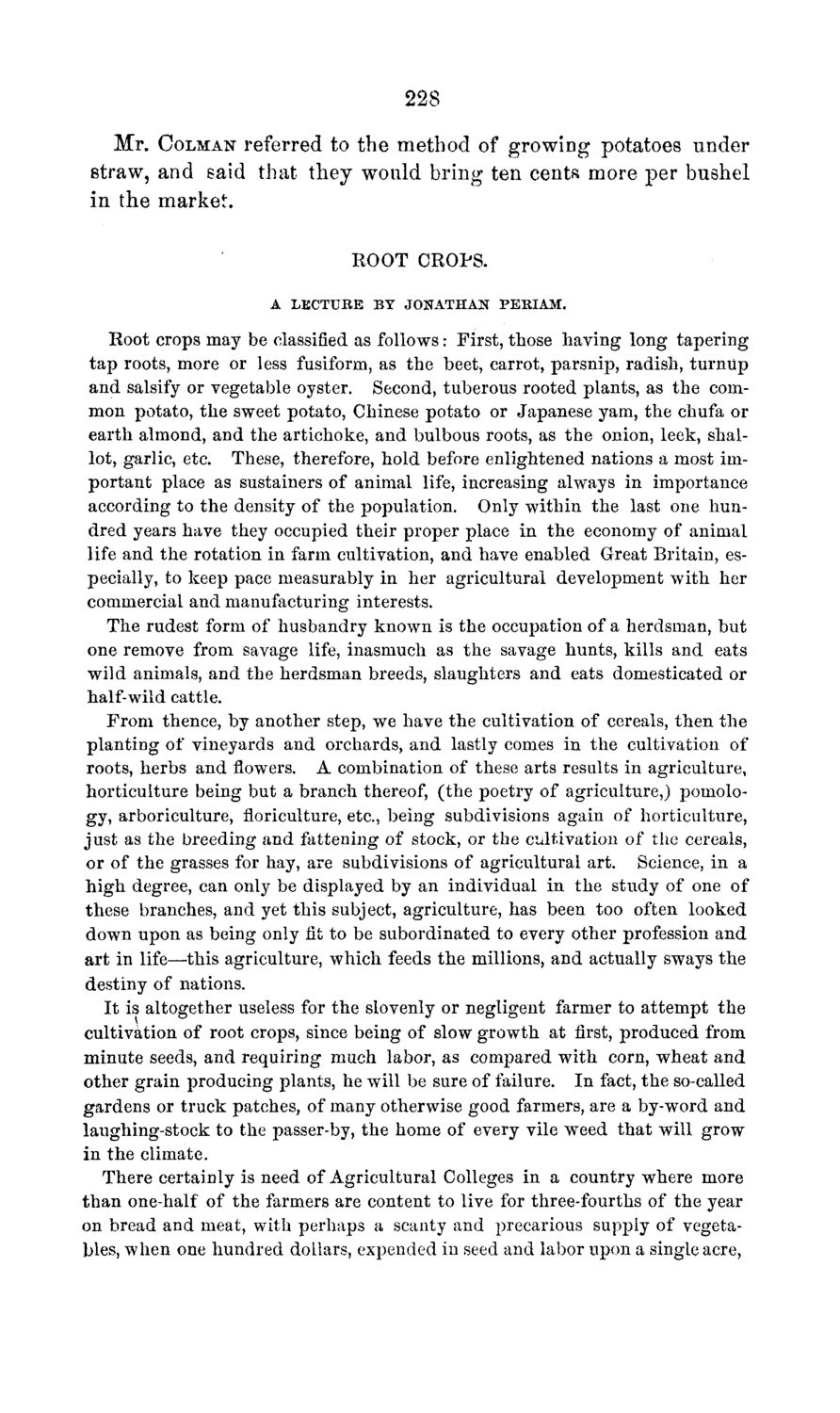| |
| |
Caption: Board of Trustees Minutes - 1869
This is a reduced-resolution page image for fast online browsing.

EXTRACTED TEXT FROM PAGE:
228 Mr. COLMAN referred to the method of growing potatoes under straw, and said that they would bring ten cents more per bushel in the market. ROOT CROPS. A LECTURE BY JONATHAN PERIAM. Root crops may be classified as follows: First, those having long tapering t a p roots, more or less fusiform, as the beet, carrot, parsnip, radish, t u r n u p and salsify or vegetable oyster. Second, tuberous rooted plants, as the common potato, the sweet potato, Chinese potato or Japanese yam, the chufa or earth almond, and the artichoke, and bulbous roots, as t h e onion, leek, shallot, garlic, etc. These, therefore, hold before enlightened nations a most important place as sustainers of animal life, increasing always in importance according to t h e density of the population. Only within the last one hundred years have they occupied their proper place in the economy of animal life and the rotation in farm cultivation, and have enabled Great Britain, especially, to keep pace measurably in her agricultural development with her commercial and manufacturing interests. The rudest form of husbandry known is the occupation of a herdsman, but one remove from savage life, inasmuch as the savage hunts, kills and eats wild animals, and the herdsman breeds, slaughters and eats domesticated or half-wild cattle. From thence, by another step, we have the cultivation of cereals, then t h e planting of vineyards and orchards, and lastly comes in the cultivation of roots, herbs and flowers. A combination of these arts results in agriculture, horticulture being but a branch thereof, (the poetry of agriculture,) pomology, arboriculture, floriculture, etc., being subdivisions again of horticulture, j u s t as the breeding and fattening of stock, or the cultivation of the cereals, or of the grasses for hay, are subdivisions of agricultural art. Science, in a h i g h degree, can only be displayed by an individual in the study of one of these branches, and yet this subject, agriculture, has been too often looked down upon as being only fit to be subordinated to every other profession and art in life—this agriculture, which feeds the millions, and actually sways the destiny of nations. I t is altogether useless for the slovenly or negligent farmer to attempt the cultivation of root crops, since being of slow growth at first, produced from minute seeds, and requiring much labor, as compared with corn, wheat and other grain producing plants, he will be sure of failure. In fact, the so-called gardens or truck patches, of many otherwise good farmers, are a by-word and laughing-stock to the passer-by, the home of every vile weed that will grow in the climate. There certainly is need of Agricultural Colleges in a country where more t h a n one-half of the farmers are content to live for three-fourths of the year on bread and meat, with perhaps a scanty and precarious supply of vegetables, when one hundred dollars, expended in seed and labor upon a single acre,
| |